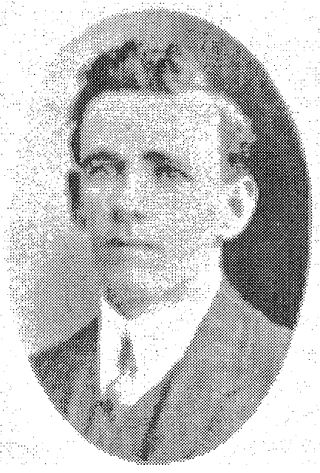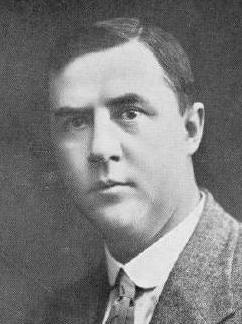Related Research Articles

The premier of Western Australia is the head of government of the state of Western Australia. The role of premier at a state level is similar to the role of the prime minister of Australia at a federal level. The premier leads the executive branch of the Government of Western Australia and is accountable to the Parliament of Western Australia. The premier is appointed by the governor of Western Australia. By convention, the governor appoints as premier whoever has the support of the majority of the Western Australian Legislative Assembly. In practice, this means that the premier is the leader of the political party or group of parties with a majority of seats in the Legislative Assembly. Since Western Australia achieved self-governance in 1890, there have been 31 premiers. Mark McGowan is the current premier, having been appointed to the position on 17 March 2017.

Frank Wilson, was the ninth Premier of Western Australia, serving on two separate occasions – from 1910 to 1911 and then again from 1916 to 1917.

Joseph Peter Gardiner was the Labor Party member for the Western Australian Legislative Assembly seat of Roebourne from 1911 to 1915. His sudden and still unexplained departure from Western Australia in 1915 was an important factor in the collapse of John Scaddan's Labor government.

John Scaddan, CMG, popularly known as "Happy Jack", was Premier of Western Australia from 7 October 1911 until 27 July 1916.

Edward Bertram Johnston, known as Bertie Johnston, was the Western Australian Legislative Assembly member for Williams-Narrogin from 1911 to 1928, and a Senator from 1929 until 1942. His resignation from the Australian Labor Party in 1915 made possible the defeat of John Scaddan's Labor government in Western Australia.

Sir Henry Bruce Lefroy was the eleventh Premier of Western Australia.
The Daglish Ministry was the 7th Ministry of the Government of Western Australia and was led by Labor Premier Henry Daglish. It succeeded the James Ministry on 10 August 1904 after the 1904 election boosted Labor's seat count from 8 to 22 in the 50-seat Legislative Assembly. As such it was a minority government and relied on the support of four independents.

Philip Collier was an Australian politician who served as the 14th Premier of Western Australia from 1924 to 1930 and from 1933 to 1936. He was leader of the Labor Party from 1917 to 1936, and is Western Australia's longest-serving premier from that party.
The Court–Cowan Ministry was the 32nd Ministry of the Government of Western Australia, and was led by Liberal Premier Richard Court and his deputy, the Nationals' Hendy Cowan. It succeeded the Lawrence Ministry on 16 February 1993, following the defeat of the Labor government at the 1993 election ten days earlier. The Ministry was reconstituted on 9 January 1997 following the December 1996 election, due in part to the retirement and resignation of several ministers—Richard Lewis, Kevin Minson, Roger Nicholls and Bob Wiese. The ministry was followed by the Gallop Ministry on 16 February 2001 after the Coalition lost government at the state election held on 16 February.
The Court Ministry was the 27th Ministry of the Government of Western Australia, led by Liberal Premier Sir Charles Court and deputy Des O'Neil. It commenced on 5 June 1975, following the Court–McPharlin Ministry, 15 months after the Coalition's electoral defeat of the Tonkin Labor government. It was followed by the O'Connor Ministry upon Court's retirement as Premier on 25 January 1982.
The Rason Ministry was the 8th Ministry of the Government of Western Australia and was led by Ministerialist Premier Hector Rason. It succeeded the Daglish Ministry on 25 August 1905 after the previous Labor minority administration fell on a vote of no confidence. On 7 May 1906, it was followed by the Moore Ministry led by Minister for Lands Newton Moore.
The Moore Ministry was the 9th Ministry of the Government of Western Australia and was led by Ministerialist Premier Newton Moore. It succeeded the Rason Ministry on 7 May 1906 after Rason resigned to accept an appointment as Agent-General for Western Australia in London. It was succeeded by the First Wilson Ministry on 16 September 1910 after Moore resigned for exactly the same reason.
The First Wilson Ministry was the 10th Ministry of the Government of Western Australia and was led by Ministerialist Premier Frank Wilson. It succeeded the Moore Ministry on 16 September 1910 after Sir Newton Moore resigned to accept an appointment as Agent-General for Western Australia in London. The ministry was followed by the Scaddan Ministry on 7 October 1911 after the Ministerialists lost government at the state election held four days earlier.
The Second Wilson Ministry was the 12th Ministry of the Government of Western Australia and was led by Liberal Premier Frank Wilson. It succeeded the Scaddan Ministry on 27 July 1916 after a vote of no confidence passed in the Legislative Assembly, due mainly to the Labor Party losing its one-seat majority through a by-election and a member resigning from the party to become an independent. In early 1917, the Liberal Party was consumed by the Nationalist Party, to whom most of its members pledged their allegiance. Its leader, Sir Henry Lefroy, formed the Lefroy Ministry on 28 June 1917.
The Lefroy Ministry was the 13th Ministry of the Government of Western Australia and was led by Nationalist Premier Sir Henry Lefroy. It succeeded the Second Wilson Ministry on 28 June 1917 due to most members of the former Liberal Party, of which the previous Premier, Frank Wilson, had been the leader, pledging allegiance to the new party. The Lefroy Ministry, which was the first Coalition ministry in Western Australia, was also the only Ministry of a non-Labor government to be chosen by caucus.
Rufus Henry Underwood, better known as Henry Underwood, was an Australian politician who represented the Western Australian Legislative Assembly seat of Pilbara from 1906 until 1924. Initially active in the Labor Party and a minister without portfolio in the Scaddan Ministry, he left the party during the conscription crisis in 1917 and thereafter represented the National Labor Party for the rest of his political career.
The Willcock Ministry was the 19th Ministry of the Government of Western Australia, and was led by Labor Premier John Willcock. It succeeded the Second Collier Ministry on 27 August 1936, upon the resignation of Philip Collier as Premier on ill health grounds. It became the longest-serving Labor ministry in Western Australia.

The Minister for Education and Training is the member of the Government of Western Australia responsible for maintenance and improvement of Western Australia's system of education, and is answerable to the Parliament for all actions taken by the Department of Education under their authority. The holder of the office is usually an elected member of parliament from the ruling party or coalition, presently Tony Buti of the Labor Party.
William Charles Angwin was an Australian politician who was Deputy Premier of Western Australia from 1924 until 1927, and Agent-General for Western Australia in London from 1927 until 1933. Born in Cornwall, England, he worked as a carpenter and builder before moving to Australia. He was a founding member of the East Fremantle Municipal Council and a member of the Western Australian Legislative Assembly for the Labor Party from 1904 until 1927, representing the seats of East Fremantle and North-East Fremantle.
References
- Black, David; Bolton, Geoffrey (2001). Biographical Register of Members of the Parliament of Western Australia, Volume One, 1870–1930 (Revised ed.). Parliament House: Parliament of Western Australia. ISBN 0730738140.
- Black, David (1991). "Factionalism and Stability: 1911-1947". In Black, David (ed.). The House on the Hill: A History of the Parliament of Western Australia 1832–1990. Perth, Western Australia: Parliament of Western Australia. ISBN 0-7309-3983-9.
- Bolton, Geoffrey; Mozley, Ann (1961). The Western Australian Legislature, 1870-1930. Canberra: Australian National University. (no ISBN)